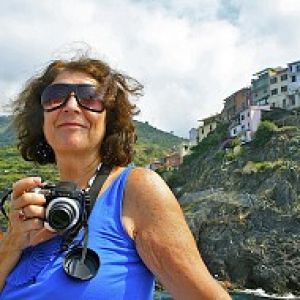Carmine Bee-eaters at the Blue Nile
Another early start - out on the lake at 6am to look for birds. It was so tranquil gliding along, waiting for the sun to come up. We saw lots of birds, though none were new to us. The Carmine Bee-eaters were the most colourful. We saw fish eagles, ibis, heron, a big goose, Jesus birds walking on water, and more, not to mention the hippos.
We got back for breakfast at 8 and were on the minibus at 9 for the rough bumpy dirt road to the village 35 km away where we’d start our walk to the Tissetat Blue Nile Falls. We went by a very busy farmers’ market and a funeral, then in the Heavily-populated countryside. Old wooden ploughs pulled by cows rather than oxen were getting the ground ready for planting, and in other places women were gather the hay to carry to the stacks. We saw plantations of cat, a cash crop which is a good earner. Sugar cane was being cut and carried on the back. It is all very labour intensive - the population of the country is 100 million but only about 10% are in cities. On the ground in front of houses we saw straw and mud mixed and left to dry to make a mud and straw The soil here is so fertile and they get rain in summer. plaster that houses are made of. There were many people walking, and a few on bicycles. Small children ran from little huts onto the road to wave or throw stones. There were stands of eucalyptus trees. We past a deacon-training camp - they were in round thatched huts though the churches had tin roofs.
It took over an hour to reach the entrance to the walk. We had to have a local guide. We set off along a bouldery path then crossed the Blue Nile by small boat. The river was split off so that the major part went to the hydro power station, and a small bit went to the falls. We climbed up to reach the view of what remained of the falls, but only Mr C and I did the down climb to the base. We all continued to a metal rope bridge over a side river where people were crossing, loaded up with hay. At the other side we climbed up a hillside, which was hot work in midday sun. A last look at the falls and we started to descend towards another bridge, a stone one built 400 years ago by Portuguese trying to convert the locals to Catholism. It was quite a steep rocky climb up out of the gorge and by now one of our group was struggling. Our minibus was waiting at the end of the circular 2 hours walk, then it was the bumpy ride back to Bahri Dar, passing smart school children dressed in green trousers, yellow tops and green jackets. It was time for a fish lunch and a welcome beer by the lake at another restaurant across the bay from our hotel. The cool breeze off the lake was welcome after our hot walk. We’d considered going to the market and getting a TukTuk back but it looked just like shops selling nothing more interesting than T shirts, shoes etc, so we went back to the hotel. I’ve deleted lots of photos and have left my camera charging in the room while we sit in the hotel garden.
Karen, the American member of our group of 4, is not happy with having to use this hotel when there are many others to choose from, and it has seen better days, but I don’t mind. Though not having hot water turned on till 6pm is a pest. Not that it mattered - it came cold anyway. Now it’s time to watch the sunset with a G&T - any hotel in Ethiopia stocking that can’t be so bad in my view!
- 20
- 5

Comments
Sign in or get an account to comment.


